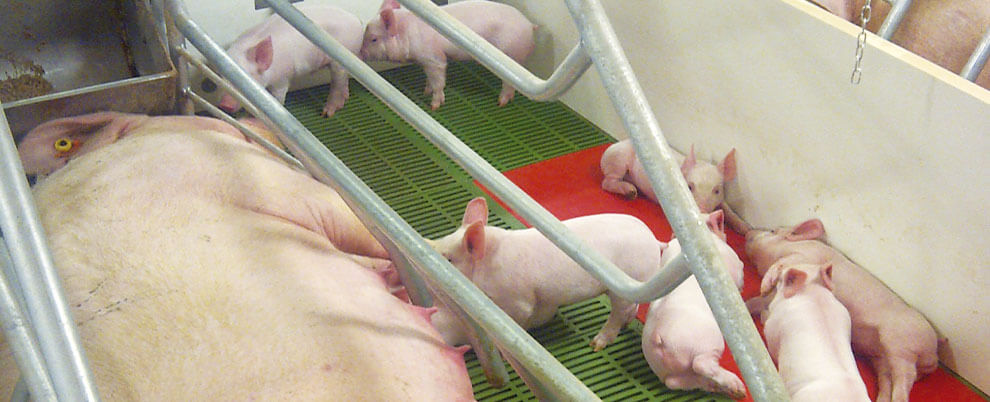Blog
Blog

Pork imports, key to the British pig sector
22nd March 2022 - News
About 60% of the pork consumed in the United Kingdom comes from other countries, which makes it a country that imports pork, something that contrasts with the rest of the countries of the European Union. Even though in recent years pork consumption has decreased in the United Kingdom, it is still the most consumed animal after poultry, and maintains great potential, so, despite Brexit, different countries struggle to place their pork in this market.
Production
According to the latest data from AHDB, the total pig production in 2018 (latest data available) was 927,000 tonnes. That same year, there were more than five million heads registered in the United Kingdom and almost eleven million pigs were slaughtered in the country, a figure that represents a value of 1,054 million pounds (1,173 million euros). More than 80% of these pigs were raised in England.
Imports
The United Kingdom is a strong importer of pork. About 60% of the meat consumed by the British comes from another country. This figure contrasts sharply with the production of the European Union, which has self-sufficiency rates of 112%. According to Eurostacom data, the total amount of imports had slight growth in value (4.7%) in the last six years, although it registered a slight decrease (1.8%) in volume.
The importing nature of the country makes competing in the British market both an opportunity and a great challenge. In this sense, there is a large concentration in this niche market, where five countries account for more than 70% of pork imports to the United Kingdom, both in value and volume: these are Germany, Ireland, Denmark, the Netherlands and Poland.
Spain, on the other hand, occupies the sixth position in the ranking of the main world exporters of pork to the United Kingdom, both in volume and value, with a very positive progression of its exports and an increase of 17.3%. Thus, the main Spanish exports to the United Kingdom are fresh, chilled or frozen meat (33,796 tonnes) sausages (12,376 tonnes) and cured hams (1,041 tonnes).
It is worth mentioning that, while the import volume has remained relatively constant over time, and in eight years has only increased by 5.2%, the export volume has grown to 52% due to British pork producers increasingly trying to optimise the product, and there are certain pork cuts, such as viscera, which are not in demand and are placed in other countries.
Consumption
Pork is one of the main sources of meat protein in the UK. Pork is the second most consumed animal (516.1 tonnes in 2019) after poultry (1.16 million tonnes) While poultry consumption increased by 7.2% in the period 2014/2019, pork experienced a decrease of 7.5% as did beef and veal, which fell by 7.9%. This can be attributed to the consumer's perception of red meat as a product with lower beneficial health properties.
On the other hand, consumption habits also affect the volume of pork sales. Breakfast is the time of day where more pork is consumed (38%), due to the British custom of having the popular "English breakfast", which consists of bacon and sausages, two of the most consumed pork products by the British. Lunch (24%) and the aperitif (27%) represent significant figures, in contrast to dinners, where hardly any pork is ingested (10%).
Consequences of Brexit
Over the past few months, the British pork sector has already felt the consequences of Brexit, and many industries in the Anglo-Saxon country are suffering delays in their pork shipments caused by the excessive paperwork required after Brexit. Containers with goods from the meat industries have been held for long periods without being able to set sail to their destinations and, given this premise, industrialists in the sector are already questioning whether it is convenient to continue exporting product since many buyers could reject the merchandise because of its possible bad condition due to waiting.
Pork prices in the UK are also currently going through a period of unease due to Brexit. It should be noted that the meat market is especially susceptible to change, as the United Kingdom is not a self-sufficient country in terms of meat production and the imposition of rates for a country that depends heavily on what it imports will increase prices and, in turn, reduce pork consumption.
The future of the British pork sector
The pork market in the United Kingdom is characterised by being very mature, saturated by some very strong competitors within the sector, and where profit opportunities arise from the small market niches in which it is possible to enter. The country consumes less and less pork, although it is expected that higher-quality meat will be in demand. In this sense, companies that focus on producing premium meat will have more prospects in the long term.
Despite everything, the United Kingdom offers a series of commercial opportunities as a market that makes it a very interesting space for export: 66.65 million consumers with a high purchasing capacity (36,000€/inhabitant/year), a strong currency and a stable, organised market with high technological and marketing capacity. With this in mind, it is clear that, despite Brexit, it remains an attractive market for any exporter.






